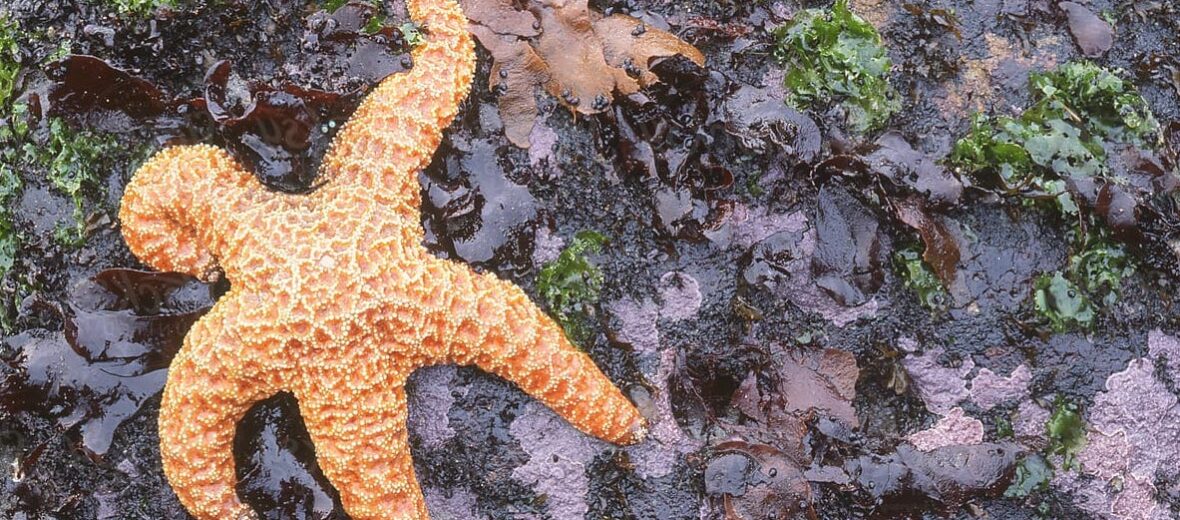
The ochre sea star, aka purple sea star, Pacific sea star, or ochre starfish, hails from the Pacific Ocean. These sea stars are what is called a keystone species in that their presence is an indicator of the intertidal zone’s health. These sea stars prefer cold water intertidal zones. Their greatest threats are humans collecting them, pollution, and climate change. These starfish are not currently evaluated by the IUCN.
First the Stats…
Scientific name: Pisaster ochraceus
Weight: Up to 1 lb.
Length: Up to 14 inches
Lifespan: Up to 20 years
Now on to the Facts!
1.) These sea stars prey on snails, mussels, clams, barnacles, and sea urchins. They will also consume carrion (dead animals).
2.) Ochre stars come in a variety of colors, like red, orange, yellow, purple, and brown.
3.) The spines on their arms are actually microscopic pincers that remove larva, algae, and other growths from their person.
4.) Like other sea stars the bottoms of each arm are covered with thousands of tiny tube feet tipped with suction cups.
5.) As is the case for all known starfish, their mouth and anus is located on the underside of their central disk, aka their body.
But wait, there’s more on the ochre sea star!
6.) How does a sea star eat? Well, they grab a hold of the outside of a clam’s shell, for instance, with its tube feet and slowly pull it open. Then the star extrudes its stomach and lays the stomach on the soft tissue of its prey. Digestive juices from the stomach dissolve the tissue and the stomach absorbs the dissolved material.
7.) It takes about 2 – 3 days to fully digest a meal.
Did you know…?
These starfish are subject to sea star wasting syndrome. This is a disease that causes starfish to lose their legs, disintegrate, and ultimately die. This disease’s origin is unknown and it may eventually eradicate ochre stars from the Oregon coastline altogether.
8.) They reproduce by broadcast spawning. This is where the male and female release eggs and sperm into the water and when the 2 meet, life begins.
9.) As in many aquatic animals, especially invertebrates, there is no natal care. Basically the fertilized eggs are left to their own devices and it’s a role of the dice if they make it to adulthood.
10.) Like all sea stars, they can regrow lost or damaged arms. This process takes up to a year to fully complete. The speed of regeneration is based on factors like water temperature, available food, and more.
But wait, there’s still more on the ochre sea star!
11.) Thanks to light-sensitive spots at the tips of their arms, they can see basic light and dark. Kind of like the parietal eye on an iguana.
12.) The presence of these sea stars helps to control California mussels and this allows for the growth of macroinvertebrates. When ochre stars were removed from a test area, the mussels overtook the area.
13.) Sans humans, the only known predators of these sea stars are sea otters and gulls.
Now a Short Ochre Sea Star Video!
Be sure to share & comment below! Also, check out the Critter Science YouTube channel. Videos added frequently!
Want to suggest a critter for me to write about? Let me know here.



